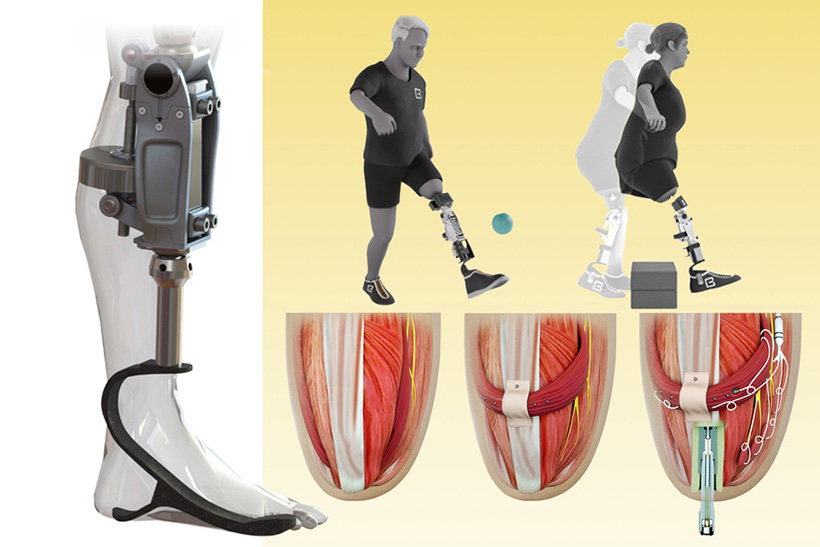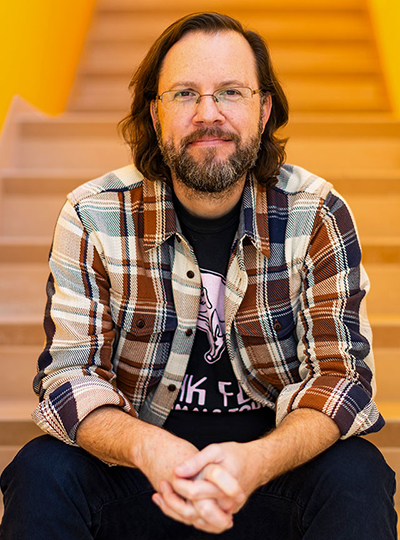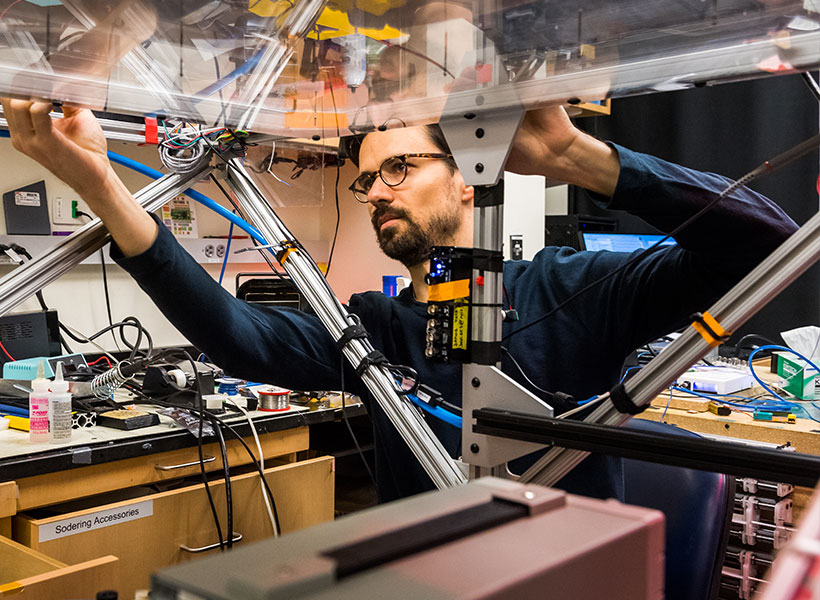In everyday conversation, it’s critical to understand not just the words that are spoken, but the context in which they are said. If it’s pouring rain and someone remarks on the “lovely weather,” you won’t understand their meaning unless you realize that they’re being sarcastic.
Making inferences about what someone really means when it doesn’t match the literal meaning of their words is a skill known as pragmatic language ability. This includes not only interpreting sarcasm but also understanding metaphors and white lies, among many other conversational subtleties.

“Pragmatics is trying to reason about why somebody might say something, and what is the message they’re trying to convey given that they put it in this particular way,” says Evelina Fedorenko, an MIT associate professor of brain and cognitive sciences and a member of MIT’s McGovern Institute for Brain Research.
New research from Fedorenko and her colleagues has revealed that these abilities can be grouped together based on what types of inferences they require. In a study of 800 people, the researchers identified three clusters of pragmatic skills that are based on the same kinds of inferences and may have similar underlying neural processes.
One of these clusters includes inferences that are based on our knowledge of social conventions and rules. Another depends on knowledge of how the physical world works, while the last requires the ability to interpret differences in tone, which can indicate emphasis or emotion.
Fedorenko and Edward Gibson, an MIT professor of brain and cognitive sciences, are the senior authors of the study, which appears today in the Proceedings of the National Academy of Sciences. The paper’s lead authors are Sammy Floyd, a former MIT postdoc who is now an assistant professor of psychology at Sarah Lawrence College, and Olessia Jouravlev, a former MIT postdoc who is now an associate professor of cognitive science at Carleton University.
The importance of context
Much past research on how people understand language has focused on processing the literal meanings of words and how they fit together. To really understand what someone is saying, however, we need to interpret those meanings based on context.
“Language is about getting meanings across, and that often requires taking into account many different kinds of information — such as the social context, the visual context, or the present topic of the conversation,” Fedorenko says.
As one example, the phrase “people are leaving” can mean different things depending on the context, Gibson points out. If it’s late at night and someone asks you how a party is going, you may say “people are leaving,” to convey that the party is ending and everyone’s going home.
“However, if it’s early, and I say ‘people are leaving,’ then the implication is that the party isn’t very good,” Gibson says. “When you say a sentence, there’s a literal meaning to it, but how you interpret that literal meaning depends on the context.”
About 10 years ago, with support from the Simons Center for the Social Brain at MIT, Fedorenko and Gibson decided to explore whether it might be possible to precisely distinguish the types of processing that go into pragmatic language skills.
One way that neuroscientists can approach a question like this is to use functional magnetic resonance imaging (fMRI) to scan the brains of participants as they perform different tasks. This allows them to link brain activity in different locations to different functions. However, the tasks that the researchers designed for this study didn’t easily lend themselves to being performed in a scanner, so they took an alternative approach.
This approach, known as “individual differences,” involves studying a large number of people as they perform a variety of tasks. This technique allows researchers to determine whether the same underlying brain processes may be responsible for performance on different tasks.
To do this, the researchers evaluate whether each participant tends to perform similarly on certain groups of tasks. For example, some people might perform well on tasks that require an understanding of social conventions, such as interpreting indirect requests and irony. The same people might do only so-so on tasks that require understanding how the physical world works, and poorly on tasks that require distinguishing meanings based on changes in intonation — the melody of speech. This would suggest that separate brain processes are being recruited for each set of tasks.
The first phase of the study was led by Jouravlev, who assembled existing tasks that require pragmatic skills and created many more, for a total of 20. These included tasks that require people to understand humor and sarcasm, as well as tasks where changes in intonation can affect the meaning of a sentence. For example, someone who says “I wanted blue and black socks,” with emphasis on the word “black,” is implying that the black socks were forgotten.
“People really find ways to communicate creatively and indirectly and non-literally, and this battery of tasks captures that,” Floyd says.
Components of pragmatic ability
The researchers recruited study participants from an online crowdsourcing platform to perform the tasks, which took about eight hours to complete. From this first set of 400 participants, the researchers found that the tasks formed three clusters, related to social context, general knowledge of the world, and intonation. To test the robustness of the findings, the researchers continued the study with another set of 400 participants, with this second half run by Floyd after Jouravlev had left MIT.
With the second set of participants, the researchers found that tasks clustered into the same three groups. They also confirmed that differences in general intelligence, or in auditory processing ability (which is important for the processing of intonation), did not affect the outcomes that they observed.
In future work, the researchers hope to use brain imaging to explore whether the pragmatic components they identified are correlated with activity in different brain regions. Previous work has found that brain imaging often mirrors the distinctions identified in individual difference studies, but can also help link the relevant abilities to specific neural systems, such as the core language system or the theory of mind system.
This set of tests could also be used to study people with autism, who sometimes have difficulty understanding certain social cues. Such studies could determine more precisely the nature and extent of these difficulties. Another possibility could be studying people who were raised in different cultures, which may have different norms around speaking directly or indirectly.
“In Russian, which happens to be my native language, people are more direct. So perhaps there might be some differences in how native speakers of Russian process indirect requests compared to speakers of English,” Jouravlev says.
The research was funded by the Simons Center for the Social Brain at MIT, the National Institutes of Health, and the National Science Foundation.





